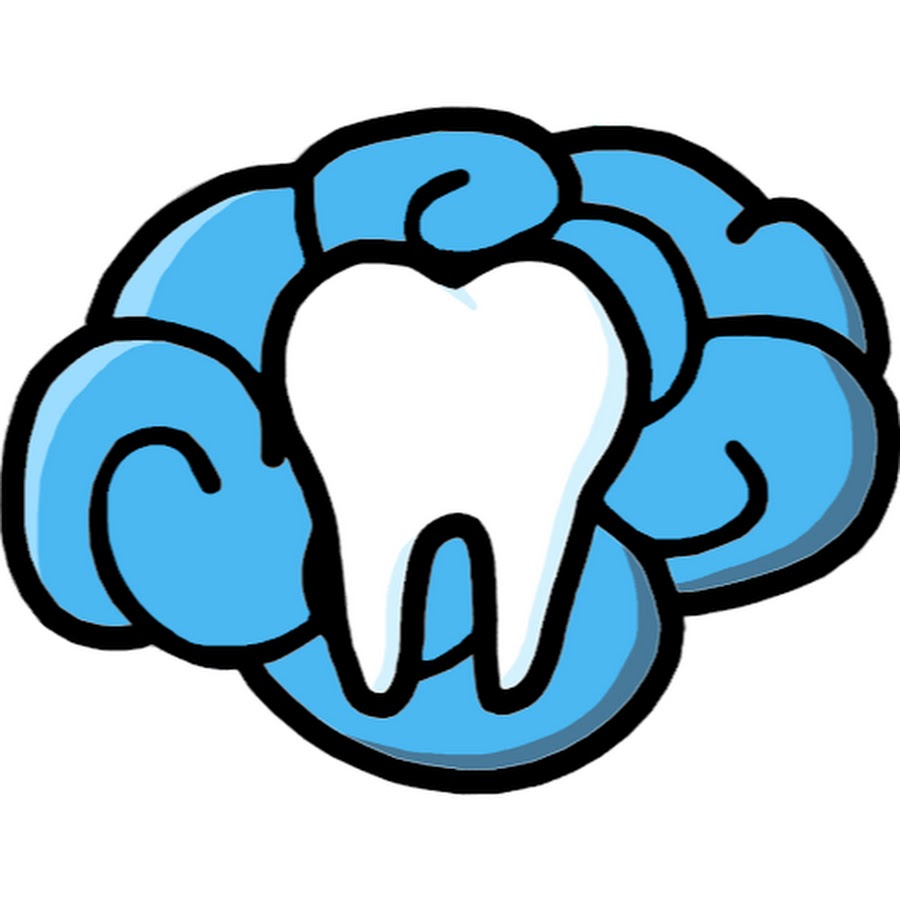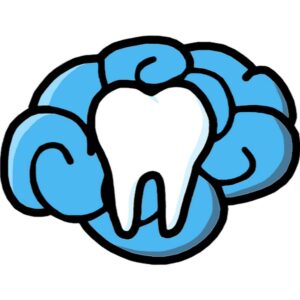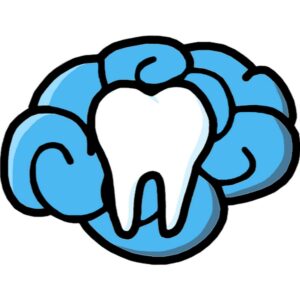
Oral Diagnosis | Developmental Disturbances of the Lips & Palate | INBDE, ADAT
- September 11, 2025
- 1:24 pm
Summary
Cleft lip is a common facial birth defect from failed fusion of medial nasal and maxillary prominences, more often in boys, Native Americans, and Asians; cleft palate involves palatal shelf fusion failure, more common in girls. Both can cause dental and feeding issues. Syndromes discussed: Van der Woude (cleft + lip pits), Ascher (double lip), Melkersson-Rosenthal (swollen lips, fissured tongue), and Peutz-Jeghers (mucosal pigmentation, GI polyps, cancer risk).
Raw Transcript
[00:00] If you're studying for the INBDE, I highly recommend INBDE Boot Camp, an all-in-one study resource that will help you pass your exam. Use coupon code, mental-dental, and online classes.
[00:20] for 10% off.
[00:40] So cleft lip is the most common facial birth defect and it affects approximately one in every 700 to 1,000 births. A cleft is at its core a failure of fusion, a failure of certain
[01:00] tissues to fuse together and cleft lip specifically results from a lack of fusion between the medial nasal prominence which would involve the nasal tip the filtrum all of this tissue here and the maxillary prominence
[01:20] include this lateral upper lip area right here. So you can see where the medial and nasal prominence and the maxillary prominence fail to fuse together. Now a cleft lip more commonly affects boys than girls, more commonly affects Native American
[01:40] and Asian babies and is more commonly unilateral than bilateral. A unilateral cleft like on the left occurs 80% of the time while a bilateral cleft like on the right occurs 20% of the time. Risk factors include
[02:00] family history, there is a genetic component to this, as well as smoking, diabetes, and a folic acid deficiency. Some of the problems that come with cleft lip include feeding difficulties, speech development, and recurrent ear disease.
[02:20] infections. Some specific dental issues involve natal and neonatal teeth as well as delayed tooth eruption. Cleft palate affects approximately one in every 2,000 births. Cleft palate results from a lack of fusion between the right and left maxisis.
[02:40] prominences, but specifically the palatal shelves, resulting in an opening or a split in the roof of the mouth. Cleft palate more commonly affects girls than boys, which is the opposite of cleft lip alone, but otherwise it has the same ethnic predation.
[03:00] election that cleft lip has. An incomplete cleft would start at the uvula and go up to involve the soft palate or even as far up as part of the hard palate, but it would stop before you get to the primary palate and the upper lip area. That would be incomplete.
[03:20] a complete cleft of the entire palate involves the full length of the primary and secondary palate. And for clarity, everything anterior to the incisive papilla is considered the primary palate. A complete unilateral cleft palate like you see on the right is the
[03:40] most common manifestation of cleft palate. There are some specific dental issues that I want to mention that occur with cleft palate. You often have rotated incisors, 20% of the time you're missing primary lateral incisors, 50% of the time you're missing
[04:00] permanent lateral incisors. Of course, I'm talking about the maxilla here because that's what cleft palate is affecting. 20% of the time those maxillary canines become impacted. You frequently have posterior crossbite, supernumerary teeth, ectopic eruption, and decreased upper face height.
[04:20] Before we continue, I have to tell you about this incredible AI study tool that will help quiz you on what you're learning in this video and it's called WSDolia. It'll give you an outline, flashcards, and even case scenario questions customized from this video and as you answer the questions you'll
[04:40] get personalized feedback to tell you exactly what you got right, what you got wrong, and why. You can find the Wizdolia link in the description below. Now, back to the video.
[05:00] depressions in the surface of the lip that usually have salivary glands draining into them. They almost exclusively occur on the lower lip. They are extremely rare in the upper lip. These invaginations occur either near the midline like you see on the left
[05:20] or at the commissures or the corners of the mouth, like you see on the right. They are generally bilateral and affect both the right and the left sides. They are called commissural pits if they are located at the commissures specifically. Vanderwoode syndrome is when
[05:40] lip pits occur in conjunction with cleft lip and or cleft palate, which we just talked about. I do have a really easy way to remember this syndrome right here. So I want you to remember a van hitting a bunch of potholes or pits on the roof.
[06:00] and a piece of wood getting split with an ax. A synonym for split of course is cleft. So a van hitting a bunch of pits and wood getting split. So congenital lip pits plus cleft lip, cleft palate,
[06:20] or both together gets you Vanderwoode syndrome. Double lip is an unusual clinical finding and is considered to be a developmental anomaly where the parzivolosa, which is the inner zone or the wet part of the lip,
[06:40] experiences hypertrophy during fetal development, resulting in this extra fold of tissue. It usually involves the upper lip more frequently than the lower lip, and during smiling, because the lip naturally retracts, this extra tissue presents an extra fold.
[07:00] a sort of second lip. This is non-inflammatory hypertrophy. It's completely not related to inflammation resulting in this redundant tissue. Surgery can be done to excise this tissue to resolve any aesthetic or functional problems that the patient may
[07:20] It can occur in isolation or as part of what's called Asher's syndrome.
[07:40] disorders and other times it occurs in isolation, but this is an inflammatory process. The swelling tends to come and go, but the condition is a chronic condition for most people, so it stays around for a long time. Corticosteroids can help reduce the swelling and may help
[08:00] prevent permanent lip damage. One of the syndromes that this condition may be related to is called Melkerson-Rosenthal syndrome, which should sound familiar to you if you watched my last video on developmental disturbances of the tongue. And there we talked about a nice memory
[08:20] trick to remember this. We have Mel's Bells, which reminds us of Bell's Palsy, another type of facial paralysis. We have the double S, which tips us off to a fissured tongue, and then rosy red swollen lips as a result of granuloma.
[08:40] which is this condition. So hopefully this video plus the last video really helps you synthesize this important information. Alright, and the next three slides, which are also the final three slides for this video, will all go together.
[09:00] you to think of these as basically level 1, level 2, and level 3 because they are all considered melanocytic lesions. They all involve increased production by melanocytes, which I have depicted here in the lower left. Melanocytes produce melanin granules.
[09:20] which are responsible for pigmentation of the skin as well as the hair. So these next three lesions, they're completely separate from one another, but they all appear brown or black due to the deposition of melanin. So we'll go kind of in order from the least important.
[09:40] meaning not really a big deal, super common, to the most important where you may actually need to biopsy that lesion. So we'll start with level one, the ephalyse. This is a freckle. It's another word for a freckle. It's completely flat. Usually it's light brown.
[10:00] in color, but could be darker and it occurs on sun exposed surfaces. So they are seen all over the skin as well as the lips because the lips do get exposed to sunlight as well. These freckles tend to be less than five millimeters in diameter. They're more.
[10:20] common and fair-skinned individuals. They occur usually in childhood, they tend to diminish with age, and they do also tend to be lighter in appearance than the next lesions I'm going to talk about. An ephilis is completely benign. It requires no treatment at all.
[10:40] Next up, level two is the melanotic macule. This is a localized, pigmented lesion associated once again with increased melanin production. Similar to an ephilis, melanotic macules are asymptomatic, they're flat, they're circular,
[11:00] not thickened and completely benign or harmless. What I want to focus on though in this slide is the difference between this lesion and the last one. First of all, melanotic macules affect the stratified squamous epithelium of oral mucosa.
[11:20] only. So this is purely a mucosal lesion. The version of this that does affect the skin is called Lentigo. So the labial mucosa of the lips, once again that inner zone of the lip, the wet part of the lip, is the most common location
[11:40] for an oral melanotic macule followed by the gingiva, the palate, and the buclamucosa. Another difference is most melanotic macules are congenital. They're present from birth and they tend not to be related to sun exposure. You can imagine
[12:00] This melanotic macula on the palate probably has a little to do with sun exposure. A melanotic macula also tends to be larger than an epholyse. They can be anywhere from 3 millimeters to 3 centimeters in diameter. And while both lesions are completely benign, that being the
[12:20] and the melanotic macule, a biopsy should be performed if there's any doubt about the diagnosis. However, that being said, multiple oral melanotic macules like you see in the left image may be a sign of a more serious condition, such as
[12:40] Addison's disease or Putes-Jager's syndrome. Putes-Jager's syndrome involves multiple dark spots all over your body, including these ones, and multiple intestinal polyps, which are clumps of cells in your gastrointestinal tract. The danger
[13:00] With this syndrome, these patients have a much higher risk of developing certain cancers, like colorectal cancer and pancreatic cancer. I do have another good memory trick for this condition. So I want you to imagine someone who is very sick
[13:20] sick, and they're staying home from school wearing their spotted pajamas, or PJs. And they have all these spots not only on their PJs, but all over their lips, their mouth, their skin. They have bumps all throughout their intestines, complete with gastrointestinal
[13:40] distress. That is Puz Jager's syndrome. And lastly, we have our level three, the melanocytic nevus, which is a benign proliferation of nevus cells, which are pigment-producing cells derived from melanocytes. They're basically a unique
[14:00] variant of melanocytes that serve a similar function. A nevus of the skin, which is also called a mole, can appear in childhood, but some people develop more and more moles as they enter adulthood. Most people have somewhere between 10 and 30 nevi on their skin.
[14:20] They have a uniform color, either brown, black, maybe even blue, and clear, well-defined borders, and they do not change in size or surface texture. Nevi of the oral mucosa, though, are relatively rare, and the most common location of
[14:40] of oral nevi is as you see here the hard palate that would be followed by the buccal mucosa being the second most common and gingiva being the third most common location while they are benign and not considered to be pre-malignant nevi of the oral mucosa
[15:00] should be completely excised and removed because they cannot be predictably differentiated from a melanoma based on their clinical features alone. This idea can be somewhat controversial, but for the board exam, I would remember that these lesions should be biopsied, not-
[15:20] because they are pre-malignant, but because they cannot be safely differentiated from an oral melanoma, which is malignant. Oral melanoma, by the way, would be my quote-unquote level four here, but I'm going to reserve that lesion for cancerous lesions later in the series.
[15:40] That's it for this video lecture. Thank you so much for watching, I genuinely appreciate it. I'd also really appreciate if you consider clicking that like button below this video, subscribing to the channel if you have not already, sharing this video with your friends, and leaving a comment.
[16:00] below letting me know what you thought. All of those things can really help to grow the channel. If you want to go above and beyond supporting me and what I do here, please check out the Patreon page linked below. If you want to join there, you'll get access to exclusive practice questions, exclusive study guides,
[16:20] Discord server and so, so much more. And if you see at the end of my video is I have an end credits screen and all of those names there are the names of my amazing Patreon supporters that I'm honored to have. Thank you again for watching and I'll see you in the next video.
[16:40] Bye!
[17:00] Thanks for watching.


